Craving for Mouthwatering Tandoori Roti? Here is the easiest Tandoori Roti Reciepe!
About Tandoori Roti
Imagine a simple, round, and rustic bread that’s a staple in every Indian home. That’s Tandoori Roti for you! It’s like the heart of a good Indian meal.
So, what’s so special about it, you ask? Well, it’s made from good old whole wheat flour mixed with a pinch of salt and some water. It’s the kind of stuff that sticks to your ribs and keeps you satisfied.
But here’s the twist: Tandoori Roti gets its name from the tandoor, a traditional clay oven. It’s a bit like a pizza oven but desi style. The roti goes in there, and magic happens.
The heat from the tandoor makes it puff up and get all smoky and delicious. You’ll see those beautiful brown spots on it – that’s the sign of a perfectly cooked Tandoori Roti.
Now, why do we love it? It’s the ideal partner for your curries, gravies, and kebabs. It’s your edible spoon, meant to scoop up all those rich and flavorful sauces.
It’s not just food; it’s a piece of our culture. Making Tandoori Roti together as a family, sharing stories around the dining table, that’s the real charm.
And hey, it’s good for you too! Whole wheat means it’s packed with fiber and nutrients to keep you strong and healthy.
Tandoori Roti Ingredients
Here are the ingredients, you will need to make Tandoori Roti.
| Ingredients | Quantity |
|---|---|
| Whole Wheat Flour | 2 cups |
| Salt | 1/2 teaspoon |
| Oil or Ghee (Clarified Butter) | 1 tablespoon |
| Water (for kneading) | As needed |
How to make Tandoori Roti in Oven
1. Prepare the Dough:
First of all, take a mixing bowl, combine the whole wheat flour and salt.
Then, add the oil or ghee to the flour mixture.
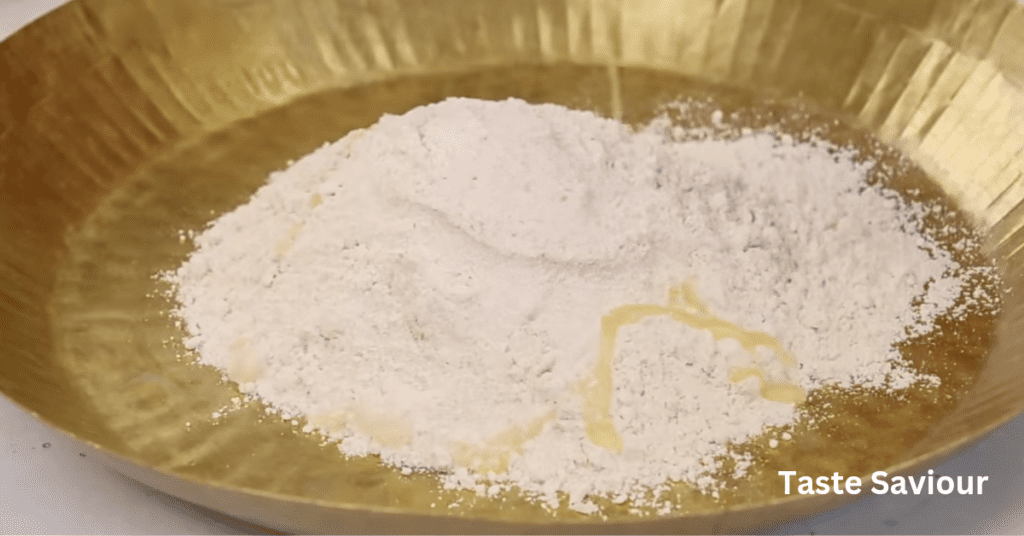
Gradually add water while kneading the dough. Add water little by little until you achieve a smooth and soft dough. Knead the dough for about 7-10 minutes until it becomes elastic. You can use a little oil (optional) on your hands to prevent sticking.
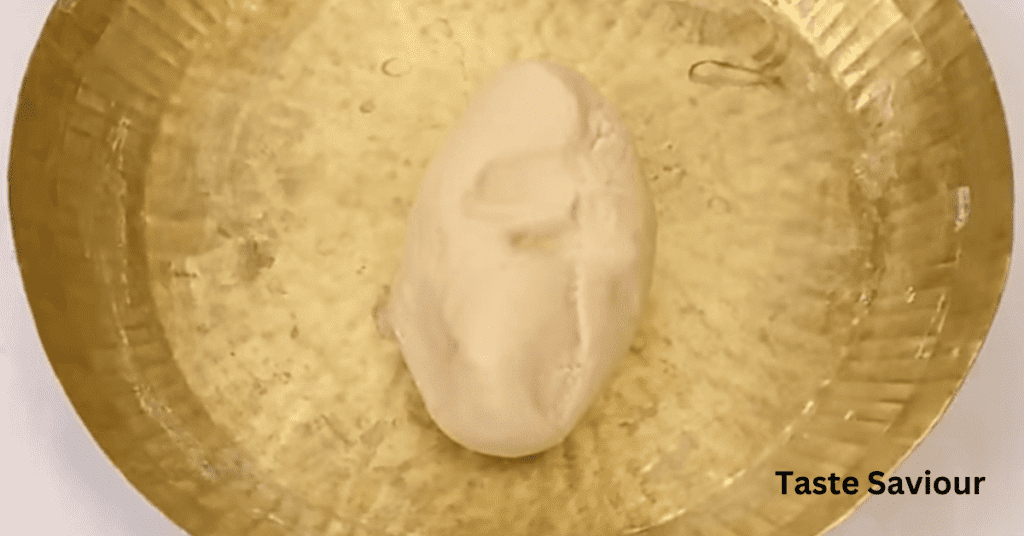
2. Rest the Dough:
Cover the dough with a clean kitchen towel or plastic wrap and let it rest for about 20-30 minutes. This allows the gluten to relax, making it easier to roll out the rotis.
3. Preheat the Oven:
While the dough is resting, preheat your oven to its highest temperature, typically around 500°F (260°C) or higher. If you have a pizza stone or cast-iron skillet, place it in the oven to heat as well.
4.Divide and Shape the Dough:
After resting, divide the dough into small lemon-sized portions and roll them into smooth balls.
5. Roll Out the Rotis:
Now, take one dough ball and flatten it slightly with the help of your hands.
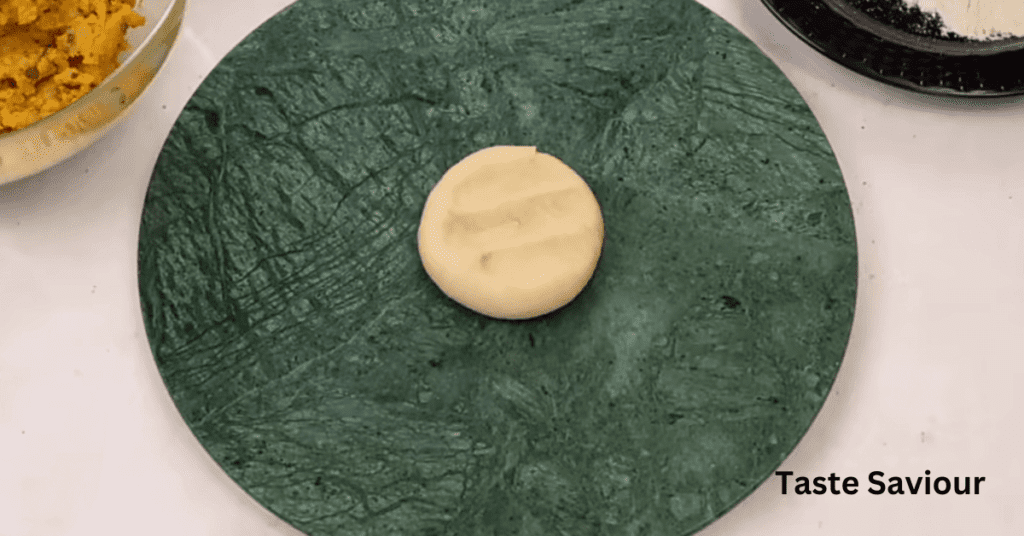
Use a rolling pin to roll out the dough ball into a thin, round roti. You can use a little dry flour to prevent sticking if needed.
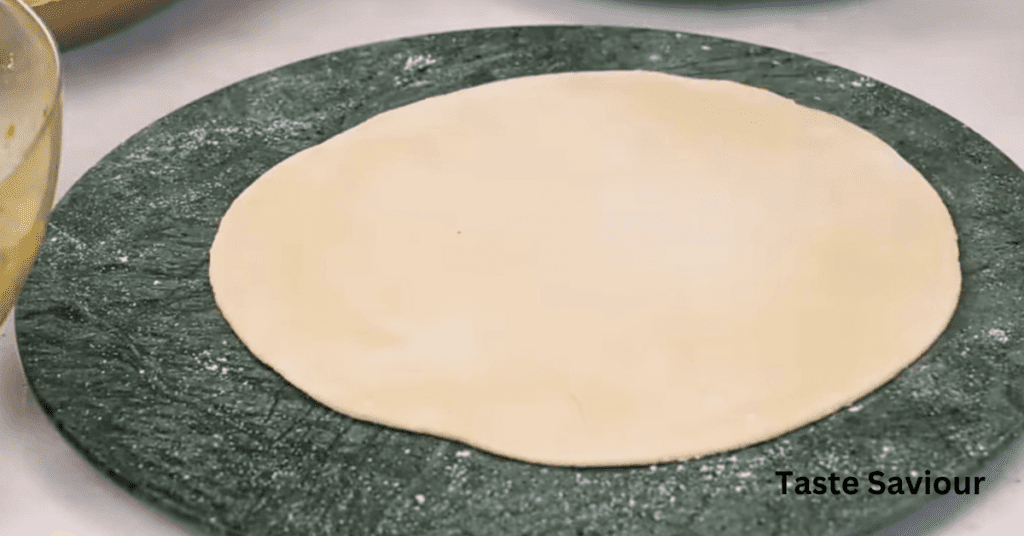
6. Bake the Rotis:
Carefully place the rolled roti onto the hot pizza stone or cast-iron skillet in the oven.

Bake for about 2-3 minutes or until you see bubbles forming and the roti starts to puff up. The exact time may vary depending on your oven’s temperature.

7. Finish Cooking:
Once the roti puffs up and develops a few brown spots, flip it over carefully using tongs or a spatula.
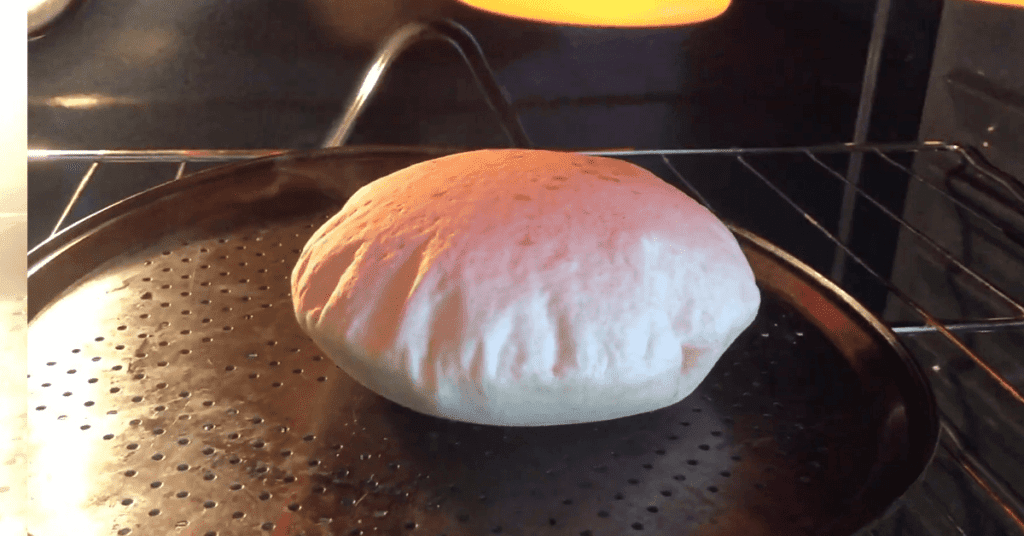
Let it cook for an additional 1-2 minutes until the other side gets some brown spots as well.
Remove the tandoori roti from the oven and brush it with a little ghee or butter for extra flavor. Serve it with delicious Kadai Paneer.
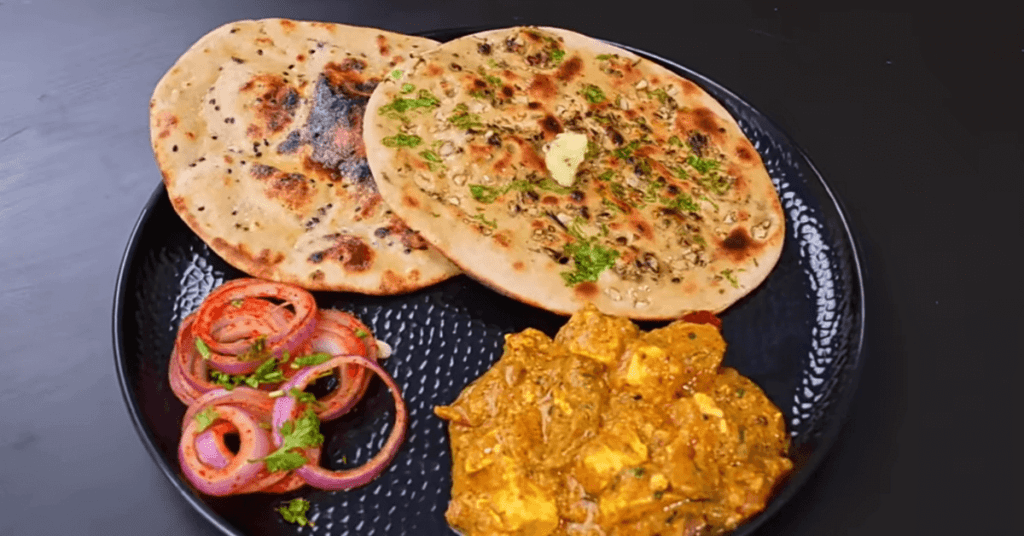
Enjoy your homemade Tandoori Roti!
Serving Suggestions
- Pair these warm and fluffy Tandoori Rotis with your favorite creamy butter chicken for a comforting and hearty meal.
- Enjoy them with spicy chana masala and a dollop of yogurt for a delightful vegetarian feast.
- Make it a complete meal by serving alongside fragrant biryani, adding a touch of Indian elegance to your dinner table.
- Don’t forget to scoop up that delicious curry with these rotis, savoring every bite of the flavorful sauce.
- For a light snack, roll up some rotis with fresh cucumber, tomato, and mint chutney for a quick and satisfying wrap.
- Share the joy of these homemade delights with friends and family, and relish the warmth and togetherness they bring to your gatherings.
Whether you’re dipping them into rich gravies or using them as a wrap for your favorite fillings, Tandoori Rotis are sure to add a touch of love to your meals.
Expert Tips
- Dough Consistency is Key: Achieving the right dough consistency is crucial. The dough should be soft, but not too sticky. Add water gradually and knead patiently until it reaches the desired texture.
- Resting Time: Allowing the dough to rest is essential for making soft rotis. This resting period helps the gluten relax, making it easier to roll out the rotis thinly.
- Rolling Technique: When rolling out the rotis, use gentle, even pressure to ensure they are of uniform thickness. Aim for a round shape, but don’t worry if they’re not perfect circles; it’s the taste that matters most.
- Preheat Your Oven Thoroughly: To achieve that tandoori-style puffiness, make sure your oven is preheated to its maximum temperature. A hot oven and a preheated pizza stone or skillet mimic the traditional tandoor oven.
- Watch Carefully: Keep a close eye on the rotis while they bake. They can cook quickly, and you’ll want to flip them as soon as you see them puffing up and getting those beautiful brown spots.
- Butter or Ghee Brush: Brushing the hot rotis with ghee or butter right after taking them out of the oven adds a lovely flavor and keeps them soft.
Remember, cooking is not just about the end result but the love and care you put into it. These tips will help you add a personal touch to your Tandoori Rotis and create a memorable dining experience.
Variations of Tandoori Roti
Roti is a versatile Indian flatbread that comes in various forms and flavors. Here are some popular variations of roti:
- Plain Roti: This is the basic, unleavened flatbread made with whole wheat flour, water, and a pinch of salt. It’s a staple in Indian cuisine and is often used as a utensil to scoop up curries and other dishes.
- Missi Roti: This is a North Indian specialty made with a mixture of whole wheat flour, chickpea flour (besan), and spices like cumin and coriander.
- Makki Ki Roti: A Punjabi specialty, makki ki roti is made from maize flour (cornmeal). It has a distinct, slightly sweet taste and is often served with sarson da saag (mustard greens curry).
- Paratha: Parathas are a thicker, flakier version of roti. They are usually stuffed with various fillings like spiced potatoes, paneer, or spinach.
- Naan: Naan is another popular Indian flatbread, typically made with all-purpose flour (maida) and yogurt. It’s leavened with yeast or baking powder, resulting in a soft, puffy texture. It’s often served with kebabs or rich gravies.
- Jowar Roti: Also known as sorghum flatbread, jowar roti is popular in parts of India. It’s gluten-free, nutritious, and has a slightly earthy flavor.
- Bajra Roti: Bajra, or pearl millet, is used to make this roti. It’s a staple in some regions of India and has a nutty taste. It’s often served with yogurt, pickle, or vegetables.
- Akki Roti: A specialty of Karnataka, akki roti is made from rice flour and typically includes grated vegetables and spices. It’s cooked on a griddle and has a unique, crispy texture.
These are just a few examples of the diverse world of Indian flatbreads. Each variation has its own unique taste and texture, making them suitable for different dishes and regional cuisines.
Health Benefits of Tandoori Roti
- Nutrient-Rich: Tandoori Roti is made from whole wheat flour, which is rich in essential nutrients like fiber, vitamins, and minerals.
- Heart Health: The whole wheat in Tandoori Roti is linked to improved heart health. It helps lower bad cholesterol levels and reduces the risk of heart diseases.
- Digestive Health: The fiber in Tandoori Roti aids in digestion and prevents constipation. It promotes a healthy gut and can help with weight management.
- Balanced Diet: Tandoori Roti is a versatile accompaniment to various dishes. Pair it with lean proteins, vegetables, and legumes for a well-balanced meal.
- Blood Sugar Control: Whole wheat in Tandoori Roti has a lower glycemic index, which means it helps regulate blood sugar levels, making it suitable for diabetics when consumed in moderation.
- Weight Management: Tandoori Roti is filling due to its fiber content.
- Versatile: You can customize Tandoori Roti with different toppings or fillings to suit your taste and dietary preferences.
- Cultural Connection: Enjoying Tandoori Roti connects you to the rich culinary heritage of India, making mealtime a cultural experience.
Nutritional Facts
Here’s a basic nutritional table for Tandoori Roti made from whole wheat flour (per 100 grams):
| Nutrient | Amount |
|---|---|
| Calories | 300 kcal |
| Carbohydrates | 60 grams |
| Protein | 10 grams |
| Dietary Fiber | 7 grams |
| Total Fat | 2 grams |
| Saturated Fat | 0.3 grams |
| Monounsaturated Fat | 0.4 grams |
| Polyunsaturated Fat | 0.8 grams |
| Cholesterol | 0 mg |
| Sodium | 250 mg |
| Potassium | 180 mg |
| Calcium | 20 mg |
| Iron | 3.5 mg |
| Magnesium | 70 mg |
Frequently Asked Questions (FAQs)
What is Tandoori Roti?
Tandoori Roti is a type of Indian flatbread made from whole wheat flour, salt, and water. It’s traditionally cooked in a tandoor (clay oven), giving it a smoky flavor and a slightly crisp exterior.
Is Tandoori Roti gluten-free?
No, Tandoori Roti is not gluten-free. It’s made from whole wheat flour, which contains gluten. If you need a gluten-free option, consider using flours like rice flour or chickpea flour.
How do I keep Tandoori Roti soft and fresh for longer?
To keep Tandoori Roti soft, store them in a clean cloth or airtight container to prevent them from drying out. You can also lightly brush them with ghee or butter before storing. Reheat them on a griddle or in the oven for a few seconds before serving to regain their freshness.
Can I make Tandoori Roti without a tandoor oven?
Yes, you can make Tandoori Roti at home without a tandoor oven. Preheat your regular oven to its highest temperature, use a pizza stone or cast-iron skillet, and follow the instructions for baking in the recipe.
How is Tandoori Roti different from Naan?
Tandoori Roti is made from whole wheat flour and cooked without leavening agents like yeast or baking powder. It’s thinner and typically has a crisper texture. Naan, on the other hand, is made from all-purpose flour (maida), often includes yogurt, and is leavened, resulting in a softer, puffier bread.
